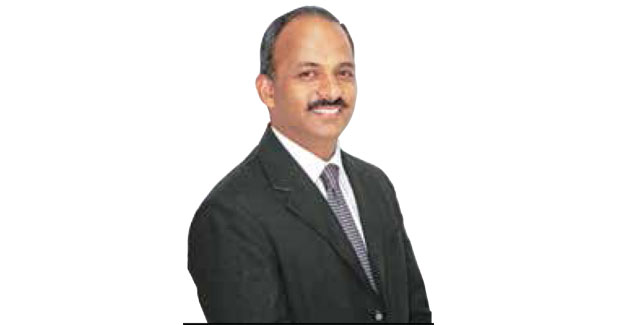
ZF has recently developed the CVT transmission
ZF is well known for producing high quality gears and high technology gear systems. The affirmation of our product quality can be seen on the accolades we receive from OEMs and end users, says Suresh KV, Country Head, ZF in India and Head, ZF India Pvt Ltd. Excerpts from the interview...
What is the dimensional range and type of gears used in construction equipment? What are the applications?
ZF uses different types of gears in our drive systems, and their uses depend on its application. Spiral bevel gears are used in the axle differentials to transmit the torque perpendicularly at 90o, helical gears are used inside the gearbox for high torque transmission with low power loss and low noise. Construction machinery requires high reduction ratio in the axle for which planetary gear sets (epicyclical) are used on the wheel hub of the axles for the higher axle ratio.
The dimensional ranges of gears depend upon the requirement of the torque transmission. Various gear sizes are available and are used in the drive systems on the basis of the application requirement.
Do you supply gears and drives to OEMS? Are you permitted to directly supply to aftermarket?
Yes. We do supply transmissions (gearbox) and axles to various OEMs in the construction equipment sector. ZF supplies power shift technology transmissions and modular design axle to all types of construction equipment. The transmissions are either semi-automatic or fully automatic and the axles are driven axles with rigid and steering types.
We supply to construction equipment segments such as wheel loaders, backhoe loaders, motor graders, mobile cranes (pick & carry, RT, slew), transit mixers, dump trucks, tele-handlers, wheeled excavators, soil compactors, and material handling equipment.
Additionally, we supply the drive units and also spare parts to the aftermarket either directly or via a dealer which depends on the size of the business of the end-user.
Could you name the key reasons why OEMs prefer your products? What are the customers? requirements?
In developing new technologies, ZF is always one step ahead with the competition and develops the state-of-the-art technology products for OEM. In the construction equipment application, ZF has recently developed the CVT transmission (stepless transmission) which is a high technology and more productive solution.
What are the latest trends and developments in your product line? In which areas do you plan to expand your product range over the next 5 years and why?
High loads at low speeds in combination with a high dynamics are the outstanding requirements for construction machinery. These criteria are met optimally by the new ZF CVT technology which possesses a degree of efficiency that was inconceivable up to now. The rising demands for fuel reduction and increased productivity require new technologies such as the CVT in construction machines. A trend towards lower engine speeds and the demand for engine stabilisation by a constant speed concept are the future challenges in the construction machinery market. The continuously varying cPOWER from ZF meets both these requirements.
Do you have a customised approach in designing the product?
Customisation of the product for the regional markets is a necessity to enable us to serve the different markets better, to sustain and also improve in the market share. At ZF, we customise the product as per the market requirements. In fact, different product technologies are available to serve the different markets.
How do you deliver quality? Is there any emphasis or requirement of using high tech production systems? Please elaborate.
Technology innovations matched with a robust global supply chain supports our state-of-the-art manufacturing and assembly process which is coupled with ZF production systems approach. This holistic approach ensures global quality products at vehicle level and field level. The affirmation of our product quality can be seen on the accolades we receive from OEMs and end users. We ensure ZF quality across manufacturing locations by using standard processes.


 +91-22-24193000
+91-22-24193000 Subscriber@ASAPPinfoGlobal.com
Subscriber@ASAPPinfoGlobal.com